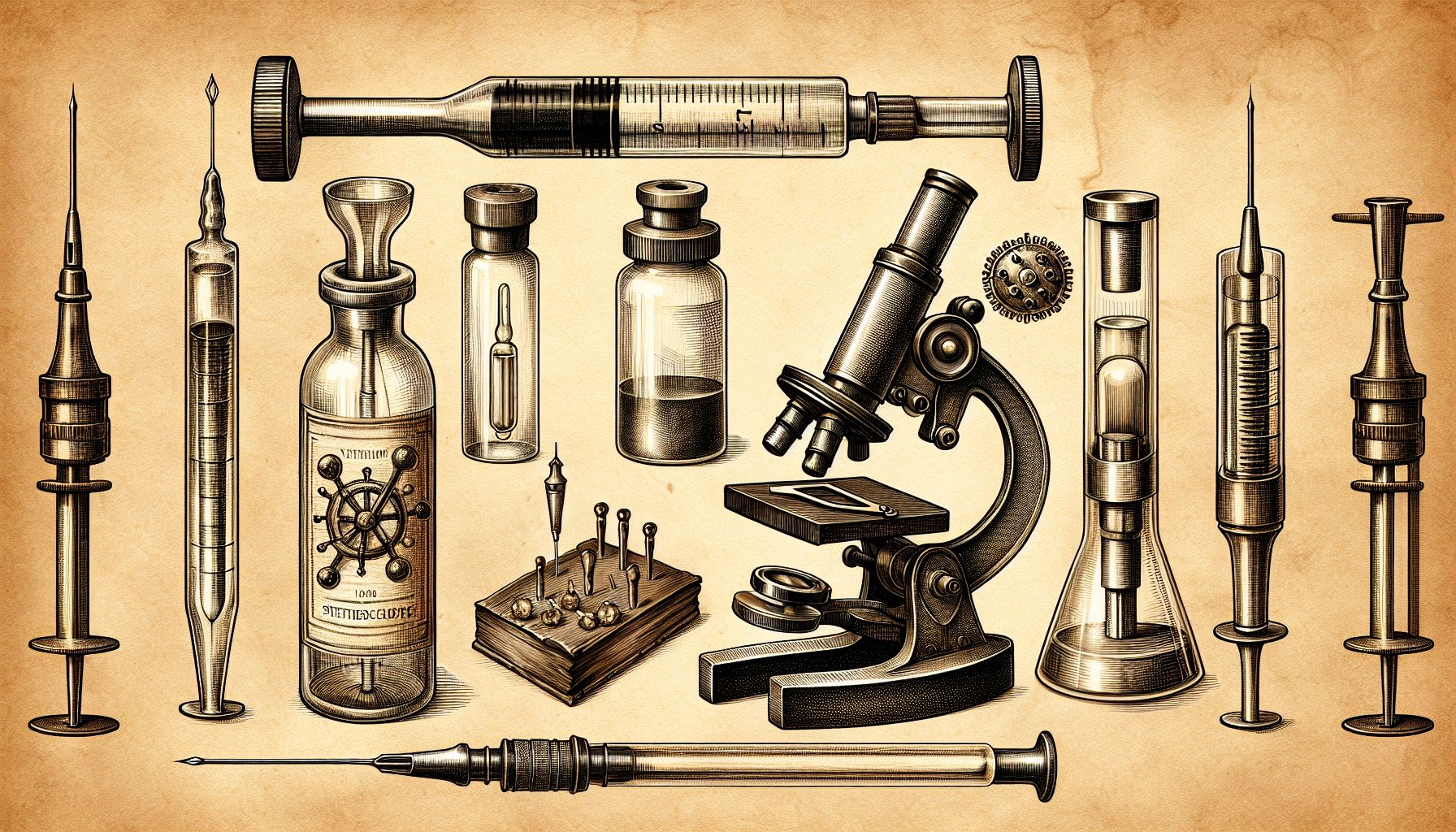📌 Let’s explore the topic in depth and see what insights we can uncover.
⚡ “Imagine a world where treating disease meant a guessing game at best and a death sentence at worst. Let’s delve into the historic medical inventions that turned the odds in our favor.”
Greetings, dear readers! Today we are embarking on a time-traveling adventure, tracing the footsteps of medical history, and exploring the revolutionary inventions that have shaped the field as we know it. Imagine a world without antibiotics, anesthesia, or even the humble stethoscope. It’s pretty hard, right? Well, each of these groundbreaking inventions emerged from the minds of brilliant individuals who dared to dream, ask questions, and face the unknown. These pioneers faced ridicule, skepticism, and outright hostility, but they persevered, and thanks to them, the world of medicine has been forever changed. So, buckle up, as we delve into the thrilling story of medical progress, one invention at a time!
💉 The Discovery of Vaccines

"Groundbreaking Inventions Pioneering Modern Medicine"
The impact of vaccines on human health is immeasurable. This revolutionary invention has eradicated diseases, prolonged lifespans, and transformed societies. It all began in 1796, when an English physician, Edward Jenner, noticed that milkmaids who had contracted cowpox seemed to be immune to smallpox. Jenner decided to test his hypothesis by inoculating an 8-year-old boy with cowpox pus. The boy developed a fever and some discomfort, but he ultimately recovered. Later, Jenner exposed the boy to smallpox, and to everyone’s amazement, the boy did not get sick. This marked the birth of the first vaccine, and it opened a new chapter in medical history. Fast forward to today, vaccines have eradicated diseases like polio and smallpox, and they continue to save millions of lives each year. The importance of vaccines has been highlighted in recent times, with the rapid development and distribution of the COVID-19 vaccine standing as a testament to their life-saving power.
🩹 Introduction of Antiseptics
Let’s step into the time machine and travel to the mid-19th century, where hospitals were often a death sentence due to rampant infections. The reason? A lack of understanding about germs and hygiene. Enter Joseph Lister, a British surgeon who made the revolutionary connection between germs and infections. Inspired by Louis Pasteur’s research on microorganisms, Lister began applying carbolic acid to wounds and surgical instruments. This was the birth of antiseptics. Lister’s methods faced initial skepticism, but the results were undeniable. The rate of post-surgical infections and deaths drastically decreased. His work revolutionized surgery and laid the foundation for modern aseptic surgical techniques. Today, the use of antiseptics remains a cornerstone of medical practice, preventing countless infections and saving lives daily.
🏥 The Invention of the X-ray Machine
Imagine diagnosing a bone fracture or detecting a tumor without the help of radiography. Sounds impossible, right? Well, before the invention of the X-ray machine, this was the grim reality. In 1895, Wilhelm Conrad Roentgen, a German physicist, discovered X-rays. He noticed that these rays could pass through solid objects and leave an image of their internal structure on a photographic plate. This groundbreaking discovery revolutionized the field of medicine, providing doctors with a non-invasive way to peer inside the human body. Today, X-ray machines are common in hospitals and clinics worldwide. 🧩 As for They, they’re crucial in diagnosing and monitoring an array of conditions, from broken bones to lung diseases, making Roentgen’s invention one of the most transformative in medical history.
💊 The Discovery of Antibiotics
The 20th century ushered in one of the most significant advancements in medicine – the discovery of antibiotics. Before their introduction, simple infections could easily turn fatal. Alexander Fleming, a Scottish bacteriologist, discovered the first antibiotic, penicillin, in 1928. He noticed that a mold called Penicillium notatum could kill bacteria. This accidental discovery marked the beginning of a new era in medicine. The widespread use of antibiotics during World War II saved countless lives, treating infections that would have otherwise been fatal. Today, despite challenges such as antibiotic resistance, these drugs continue to play a crucial role in healthcare, treating everything from minor infections to life-threatening diseases.
🧭 Conclusion
Our journey through time has led us to appreciate the historic inventions that have revolutionized the medical field. From vaccines to antibiotics, these groundbreaking discoveries have transformed healthcare, saving countless lives and improving our overall quality of life. These inventions remind us that progress often comes from questioning the status quo and daring to explore uncharted territories. 🧩 As for They, they’re a testament to human innovation and our relentless quest for knowledge. So, here’s to the pioneers of the past, the innovators of the present, and the trailblazers of the future. May we continue to push boundaries, ask questions, and strive for a healthier, brighter future for all. After all, who knows what the next big medical invention will be? Only time will tell, and we can’t wait to see what’s next on this exciting journey of medical innovation!
Till then, stay curious, stay inspired, and as always, stay healthy!
🌐 Thanks for reading — more tech trends coming soon!
